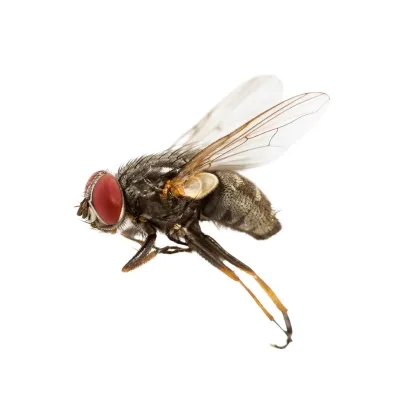
Insects
Varies by species, typically 3 to 12 mm
Small, often gray or black, with a pair of wings and large, compound eyes.
6
Yes, short
Yes, typically only one pair, with the hind pair modified as halteres (small, balancing structures).
Flies are found almost everywhere. Indoors, they are attracted to food, garbage, and moist areas. Outdoors, they are common around trash bins, compost piles, animal waste, and rotting organic material.
Flies are one of the most widespread pests, with numerous species that can adapt to nearly any environment.
Known for their rapid breeding and short lifespans, flies are notorious for being vectors of various diseases due to their attraction to garbage, food, and waste.
While most flies are merely a nuisance, some species can pose significant health risks to humans and animals.
Flies have small, soft bodies, typically gray or black, with distinct wings and large, often red or brown, compound eyes.
They have short antennae and a pair of halteres (balancing organs) in place of a second pair of wings, aiding in their agile flying.
House flies, fruit flies, and drain flies are some of the most common species encountered indoors.
Flies thrive in areas with access to food and organic matter. Indoors, they are commonly found in kitchens, near trash, drains, or in bathrooms.
Outdoors, they congregate near garbage, compost piles, animal waste, and decaying vegetation. Flies have short lifecycles, reproducing rapidly in warm conditions.
Females lay eggs on food or waste, which hatch into maggots before maturing into adult flies.
Flies are vectors for bacteria and diseases, including E. coli, Salmonella, and dysentery, as they pick up pathogens from decaying materials and carry them onto food and surfaces.
Fly infestations can cause contamination and spread illnesses, posing particular risks in food preparation areas and healthcare settings.
Additionally, certain species, like the blowfly, can infest wounds, leading to potential health issues in animals and humans.
Our support team is here and ready to assist with any questions or to schedule a pest control service whenever it’s convenient for you.